Concentric twisting takes a lot of planning, with the number of wires in each layer being important for ensuring a consistent lay, and a flexible finished harness.
This calculator is based on the calculations used in MIL-STD-339. References for how this works are at the bottom of the page.
The calculators below uses the sizing of Spec 44 wire, and M27500 shielded wire, if using a different wire, select the custom option, manually measure its diameter and enter it.
Spec 44 Wire sizes:
| Size | Diameter |
| 22AWG | 1.2mm |
| 20AWG | 1.4mm |
| 18AWG | 1.6mm |
| 16AWG | 1.8mm |
| 14AWG | 2.2mm |
| 12AWG | 2.7mm |
| 10AWG | 3.9mm |
| Single Core Shielded | 2.15mm |
| Twin Core Shielded | 3.15mm |
| Three Core Shielded | 3.2mm |
| Four Core Shielded | 3.45mm |
-
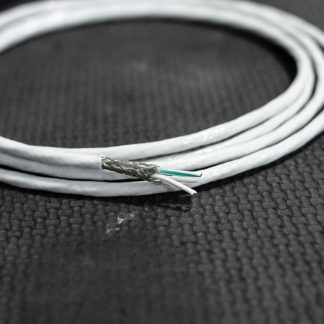 Shielded Wire$4.95 – $12.90
Shielded Wire$4.95 – $12.90 -
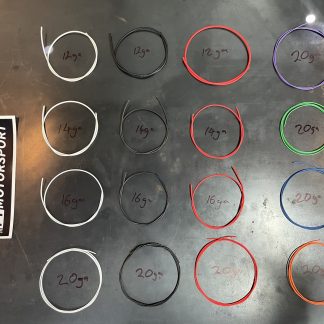 Spec 44 Wire – Hook up Wire – M81044/12$1.35 – $12.36
Spec 44 Wire – Hook up Wire – M81044/12$1.35 – $12.36
This calculator also assumes all wires being used in each layer are the same size (standard construction). In the real world this isn’t always the case, especially with core layers where different sizes of shielded wires, twisted pairs, or power wires might be run (hybrid construction). Choosing wires which are as close in diameter as possible will result in the best end product, but slight variations will still work. If you’re planning to use different sizes of wires in a layer, ensure they are similar in size, and then choose the larger wire size for this calculator. The most accurate result will always be from measuring the actual harness, but this is not always a feasible option. It is worth noting that even within the calculator round occurs when selecting the number of wires needed in a layer.
NOTE : Use maximum diameters as this will be the worst case condition for form, fit, and function.
Core Size Calculator
Note that this assumes all core wires are the same size, if using a mix of wire sizes your are best off constructing and then measuring your core diameter. It is also worth mentioning that while a 6 wire core is possible a 7 wire core will result in a nicer lay as the wires pack together with a far better density. This can be worked around by adding small filler wires between the larger core wires to ensure a good fit, that being said, this technique is outside the realm of this calculator.
Layer 1 Calculator
Use either a measured core diameter or the calculated value from the above calculator. This calculator will tell you how many wires of a certain size are needed for your first layer and the overall size of your harness with the core and this layer.
Layer 2 Calculator
Use either a measured Layer 1 diameter or the calculated value from the above calculator. This calculator will tell you how many wires of a certain size are needed for your second layer and the overall size of your harness with the core and the first two layers.
Number Of Wires in Harness
Total number of wires: 0
If you require extra layers the below calculator can be used, you will just have to manually keep track of the layer sizes and the total number of wires in the harness.
Extra Layers Calculator
Concentric Harness Construction Elements
Setup
When cutting wires, ensure 20% extra is allowed for to account for lay loss and end tapes.
When laying twisted pairs, take care to ensure they do not become a quad.
Lay Direction
The lay direction is the direction of a component wire in a layer as it goes away from the observer from the top of
the cable.
Left Hand Lay passes to the left as it goes over the top of cable.
Right Hand Lay passes to the right as it goes over the top of cable.
The lay direction always needs to alternate between layers.
Lay Length
Lay length is the distance taken for a wire to make one turn around a component.
A suitable lay length is 8-12 times the diameter of the finished layer. A lay length is 10 times the layer diameter is generally used where possible to ensure the best economy and flexibility.
A longer lay length will result in a stiffer finished cable, while a shorter lay length will be more flexible. Lay length can be adjusted (decreased) to allow a layer to be completed where filler would be required otherwise.
Lay Length Calculator
Using bundle diameters from the calculators above, input the diameter of the layer which you are wanting to lay (the value of “Total Diameter with This Layer” for the layer you are laying).
If calculating on a physical harness, measure the bundle diameter and then add two times the wire diameter being used for the layer (bundle dia.+ (2*wire dia.))
Inputting the value in the calculator below will give you lay lengths from 8-12 times the diameter of the finished layer.
Lacing
Lacing cord is used to hold the layers of a concentrically twisted harness in place.
Once you have your layer twisted, take a section of lace which is longer than the harness section.
Wrap the lace around the end of the harness a few times in a short distance (without too much overlap to avoid a thick spot).
Using Kapton tape, secure the lace in position.
Once secure lay the lace over the harness, ensuring that the lay direction is the opposite of the wires lay below. If your top layer has a left hand lay, then the lace should be placed with a right hand lay. This ensures that the bundle is held tightly.
As you lay the lace, ensure it lays flat on the harness to ensure no lumps.
The lay length of the lace should be slightly shorter than the underlying layer.
Once you have laced the length of the harness, wrap the lace around the harness and secure with Kapton tape in the same fashion as the other end.
-
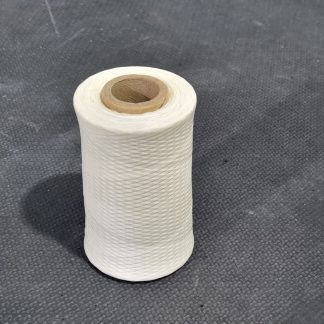 Wiring Lacing Cord$0.88
Wiring Lacing Cord$0.88
Fillers
When calculating the number of wires needed for your layers you may need to use more wires than you need in your harness. In this case fillers are included to round out a cable and ensure symmetry.
As mentioned in the core layer calculator, filler wires can also be used to fill out a core bundle to achieve a more circular finish. You can also use assigned wires for this if you have wires of the correct size to work with.
If you have larger wires in a layer and need to run small wires in your harness, you can calculate which size of wire will fit between the larger wires.
| Number of wires in Lay Pattern | Filler Size Factor |
| 2 | d*0.67 |
| 3 | d*0.50 |
| 4 | d*0.41 |
| 5 | d*0.39 |
| 6 | d*0.37 |
| 7 | d*0.34 |
| 8-10 | d*0.32 |
| 11-17 | d*0.31 |
| 18-24 | d*0.28 |
| 25+ | d*0.25 |
If using 6 wires 10AWG wires in a bundle you would use the following equation:
3.9*0.37=1.443
This means you could fill the gaps in the 10AWG layer with wire with a 1.4mm diameter (20AWG)
DR-25 Sizing
With your total harness size calculated you can work out what size of DR-25 you need. DR-25 heat shrink increases its wall thickness when it is recovered (shrunk). So in order to gain maximum protection for your wiring harness, choose the size that will recover (shrink) the most before it is tight on your wires.
| Size (in) | Recovered (in) | Dimension (mm) | Recovered (mm) |
| 1/8 | 1/16 | 3.2 | 1.6 |
| 3/16 | 3/32 | 4.8 | 2.4 |
| 1/4 | 1/8 | 6.4 | 3.2 |
| 3/8 | 3/16 | 9.5 | 4.75 |
| 1/2 | 1/4 | 12.7 | 6.35 |
| 3/4 | 3/8 | 19 | 9.5 |
| 1 | 1/2 | 25.4 | 12.7 |
If your Harness is going to be 8mm in size then 1/2″ DR-25 is the best option as it is the largest size which will recover tightly on the harness.
Further Reading
For more information on concentric twisting, the TE Connectivity Hand Laying Cable Guidelines and MIL-STD-339 are linked below:
TE-Hand-Laying-Cable-Guidelines
-
 Shielded Wire$4.95 – $12.90
Shielded Wire$4.95 – $12.90 -
 Wiring Lacing Cord$0.88
Wiring Lacing Cord$0.88 -
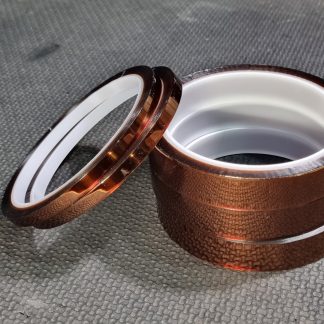 Kapton High Temperature Tape$8.95 – $21.95
Kapton High Temperature Tape$8.95 – $21.95 -
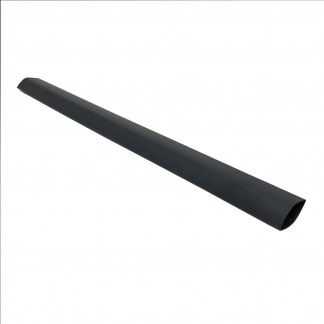 Raychem SCL – Glue Lined heat shrink$10.20 – $34.50
Raychem SCL – Glue Lined heat shrink$10.20 – $34.50 -
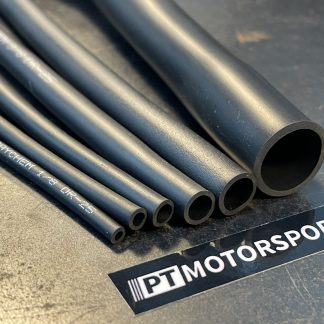 Raychem DR-25 Heat Shrink$9.50 – $36.50
Raychem DR-25 Heat Shrink$9.50 – $36.50 -
 Spec 44 Wire – Hook up Wire – M81044/12$1.35 – $12.36
Spec 44 Wire – Hook up Wire – M81044/12$1.35 – $12.36
How this calculator works.
Core size calculator:
The core diameter calculator uses the wire diameter and a multiplication factor as found in MIL-STD-339 Section 600 Table XXI. The multiplication factors are as follows (where d is the wire diameter):
| Number of Wires in Core | Multiplication Factor |
| 1 | d*1 |
| 2 | d*2 |
| 3 | d*2.15 |
| 4 | d*2.41 |
| 5 | d*2.7 |
| 6 | d*3 |
| 7 | d*3 |
Layer Calculator:
The layer calculators takes the diameter of the previous layer(s) and calculates how many wires are needed in the next layer as well as calculating the bundle diameter once that layer is complete.
To calculate the number of wires needed for the next layer, the bundle diameter has to be divided by the wire size to be used in the next layer.
Example:
3 core wires of 14AWG
14AWG = 2.2mm diameter
2.2*2.15 = 4.73mm Core Bundle Diameter
If the next layer is going to be made with 20AWG wire then the following is done
20AWG = 1.4mm diameter
4.73/1.4 = 3.38
If manually calculating, this number is used with this lookup table:
3.38 corresponds to roughly 13 on the chart, meaning that 13 wires are needed for the next layer.
If you are wanting to skip the chart, the following equation can be used to convert the 3.38 value found directly to a corresponding wire count.
Number of Wires Needed=3*x+3
where x is the number derived from dividing the bundle diameter by the wire size to be used in the next layer.
The calculator above does all of this in one step as well as rounding to the nearest whole number, so you only need to enter the current bundle size and the size of the wire being used for the next layer.
To calculate the new bundle diameter the following is done:
Bundle Diameter + 2*wire diameter
If we continue the example above, then we get the following:
New Bundle Diameter = 4.73+(2*1.4)
New Bundle Diameter = 7.53mm
A concentrically twisted harness is a big undertaking, but hopefully these tools will help you achieve a great result and help with your planning.










